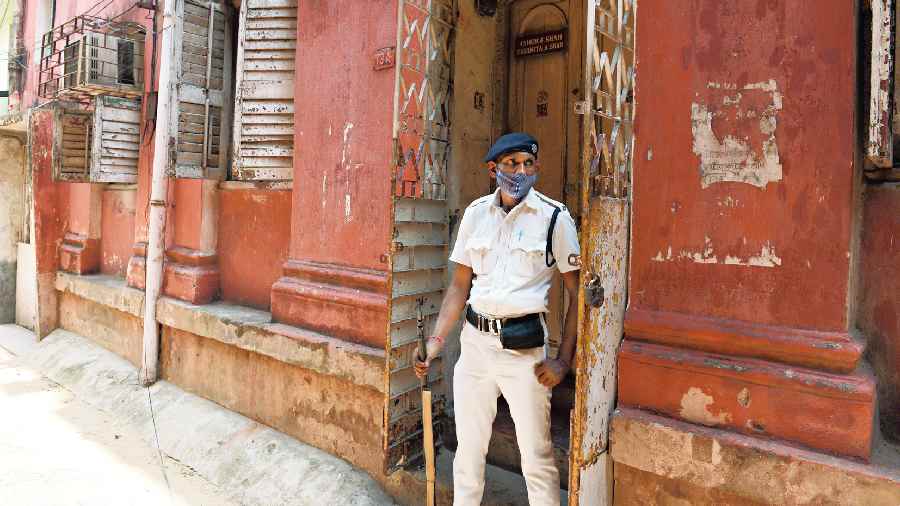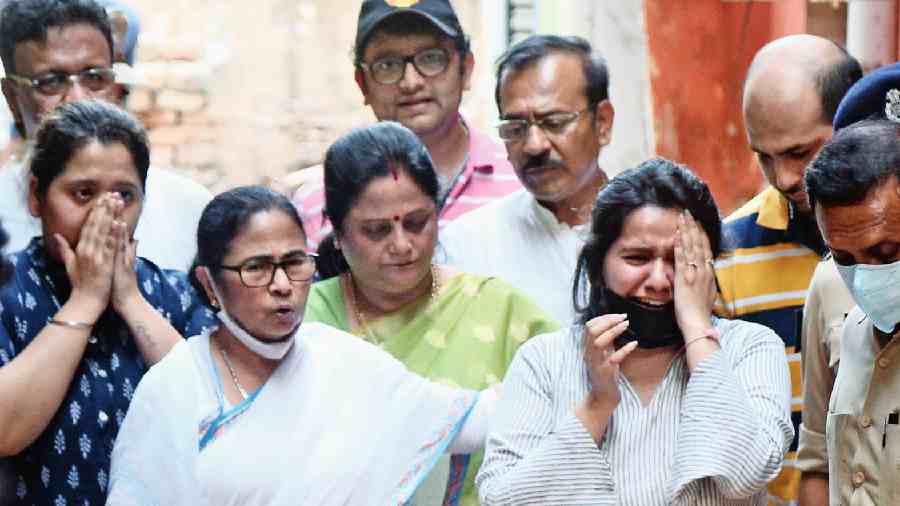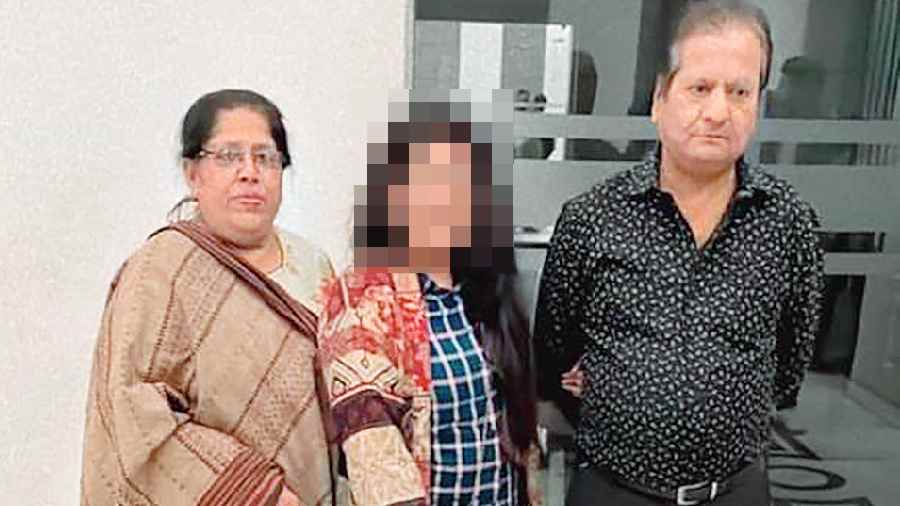A 7mm bullet-head has been found in the head of Rashmita Shah, who along with her husband was found murdered at their Bhowanipore apartment in south Kolkata on Monday.
The murder weapon is yet to be found. The Telegraph spoke to several police officers and ballistic experts to find out what a bullet found in a victim’s body could reveal about the type of weapon from which it was fired.
Striation marks: Striation marks are the “scratches” produced when the bullet moves laterally against the barrel of the firearm, producing a scrape mark.
A police officer with experience of working in the arms act section said a “regular” gun manufactured in a gun and shell factory under standard specifications had rifling inside the barrel of the gun. A bullet fired from a handgun has a spiral spin that ensures accuracy and this is achieved by rifling.
“When a bullet passes through a barrel that has rifling inside it, symmetrical scratch marks will be produced on the projectile or the bullet-head,” said the officer.
But in an improvised gun, which lacks rifling, the scratch marks on the bullet-head will be “random”.
A forensic expert said that judging by the nature of the striation marks on a bullet-head, it was possible to say if the gun from which the bullet was fired was a regular or an improvised one.
An officer involved in investigating the murder of the Bhowanipore couple — Ashok and Rashmita Shah — said the bullet-head retrieved from the woman’s body had been sent for forensic tests.
Entry and exit wound: An entry wound is the point where a bullet enters the body and the exit wound, if any, is where it leaves.
“If the velocity of the bullet is high and the shot is fired from a close range, chances are that it would pierce the target and create an exit wound, causing loss of blood,” the expert said.
However, Kolkata police officers who are familiar with the post-mortem findings of Rashmita said the woman only had an entry wound at the back of her head. The bullet was found lodged inside her head.
The absence of an exit wound has given cops the impression that the velocity of the bullet that hit Rashmita was not high enough to match the velocity of a bullet emerging from a rifled barrel.
“The shot was fired from a close range as the room where she was found was not too large. The distance between the victim and her killer could not have been more than a few metres. Had the bullet been fired from a regular 7mm pistol, the bullet speed should have been enough to create an exit wound,” said an officer.
“If a regular gun is used, it could mean the killer had a licensed gun. Use of an improvised gun could mean involvement of hired killers.”
“These are preliminary presumptions. The exact nature of the murder weapon will be clear only after it is recovered,” he said.


